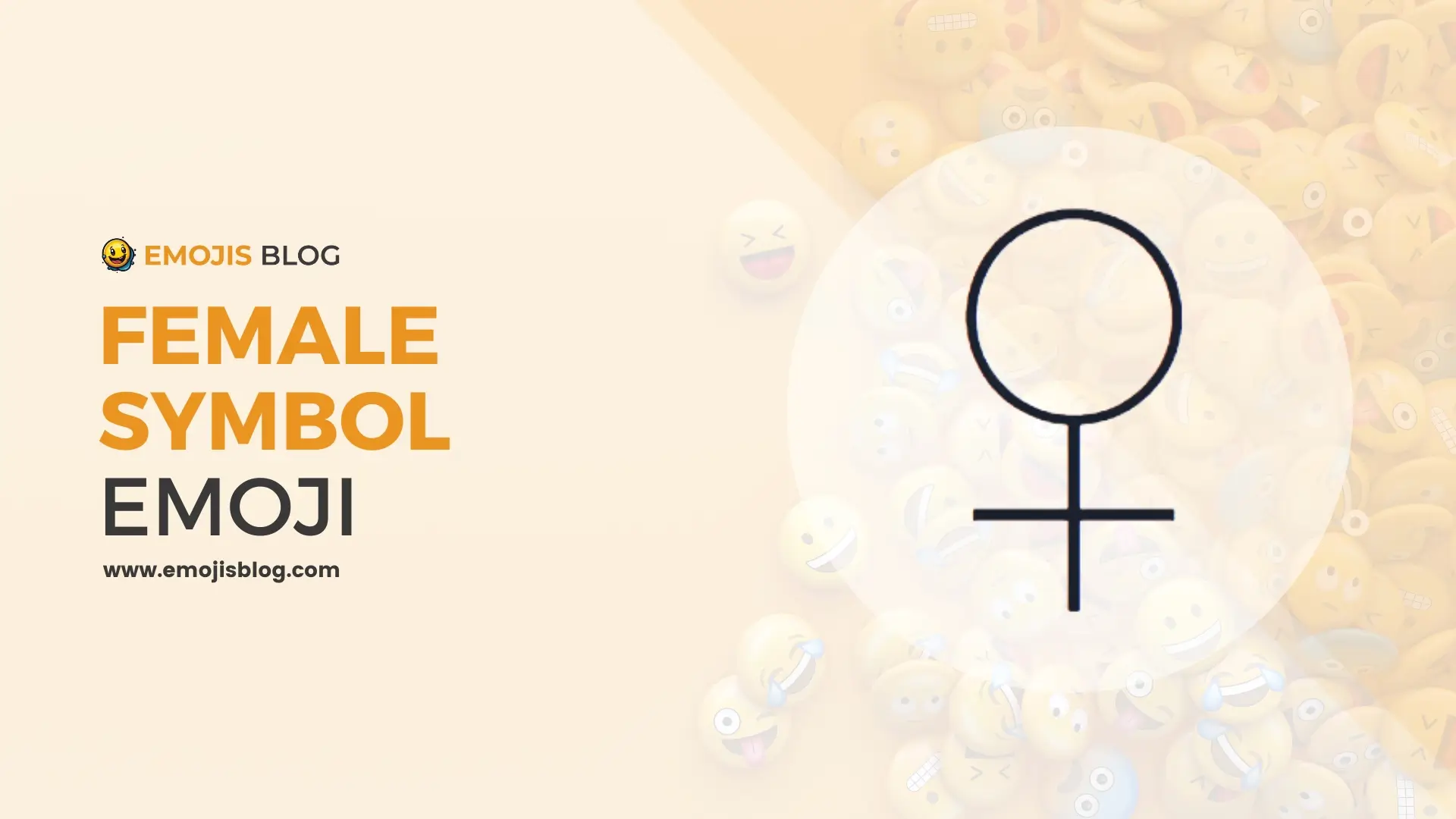What Does The Female Symbol Emoji Mean ♀
♀
What’s Female Symbol Emoji?
The female symbol emoji ♀, a digital representation of the traditional symbol for the female sex, is deeply rooted in historical and cultural significance. Originating from the symbol associated with the Roman goddess Venus, it combines a circle with a cross extending below, symbolizing femininity, beauty, and love. In modern usage, particularly in digital communication, this emoji transcends its biological origins to represent female empowerment, gender identity, and solidarity with women’s issues. It serves as a concise yet powerful tool for expressing support for women’s rights, celebrating womanhood, and contributing to discussions on gender equality in the increasingly diverse and inclusive digital landscape.
Technical Information
| Attribute | Details |
|---|---|
| Emoji | ♀ |
| Unicode Character | U+2640 |
| Name | Female Sign |
| Introduced In | Unicode 1.1 (1993) |
| Category | Symbols |
| Subcategory | Gender |
| Platforms Supported | iOS, Android, Windows, macOS, Linux, etc. |
| Common Usage | Representing femininity, women’s rights, gender identity |
| Variations | None |
| Related Emojis | ♂ (Male Sign), 🚺 (Women’s Room), 🚹 (Men’s Room), 🚻 (Restroom), 🚼 (Baby Symbol) |
Understanding the Female Symbol Emoji: ♀
In the digital age, emojis have become a universal language, transcending cultural and linguistic barriers. Among these, the female symbol emoji, represented by the symbol ♀, holds significant meaning and history. This article delves into the origins, symbolism, and contemporary usage of this iconic emoji.
Historical Background
Origins of the Symbol
The female symbol ♀ has its roots in ancient times. It is traditionally linked to the Roman goddess Venus, embodying femininity, love, and beauty. The symbol itself is a stylized representation of Venus’s hand mirror, combining a circle with a small cross extending below it. This design has been universally recognized as denoting the female sex.
Evolution Over Time
Over centuries, the symbol has been adopted and adapted in various contexts, from biology to feminism. In biological texts, it has been used to differentiate female organisms or characteristics. In the 20th century, the symbol gained prominence in the feminist movement, representing the struggle for women’s rights and gender equality.
The Emoji Revolution
Emergence in Digital Communication
With the advent of digital communication, traditional symbols found new life as emojis. The female symbol emoji was introduced to bring gender representation into the digital conversation space. It is used across various platforms, including social media, messaging apps, and emails.
Usage and Interpretation
In digital communication, the female symbol emoji is often used to express female empowerment, gender identity, and solidarity with women’s issues. It’s a shorthand way of celebrating womanhood and acknowledging topics related to women’s rights and achievements.
Contemporary Significance
Inclusion and Diversity
The inclusion of the female symbol emoji in digital platforms reflects a broader movement towards diversity and representation in the digital world. It allows users to express gender identity and support gender-related causes more visibly and straightforwardly.
Beyond Gender Binary
The conversation around the female symbol emoji also intersects with discussions about gender fluidity and non-binary identities. It plays a role in a larger array of symbols that represent different gender identities and expressions, contributing to a more inclusive digital environment.
Conclusion
The female symbol emoji, ♀, is more than just a digital icon. It is a symbol with deep historical roots and contemporary significance. In the world of emojis, where brevity and visual impact are key, it stands as a powerful representation of femininity, gender equality, and the ongoing struggle for women’s rights. As digital communication continues to evolve, the female symbol emoji will undoubtedly continue to play a vital role in expressing and shaping conversations around gender and identity.

